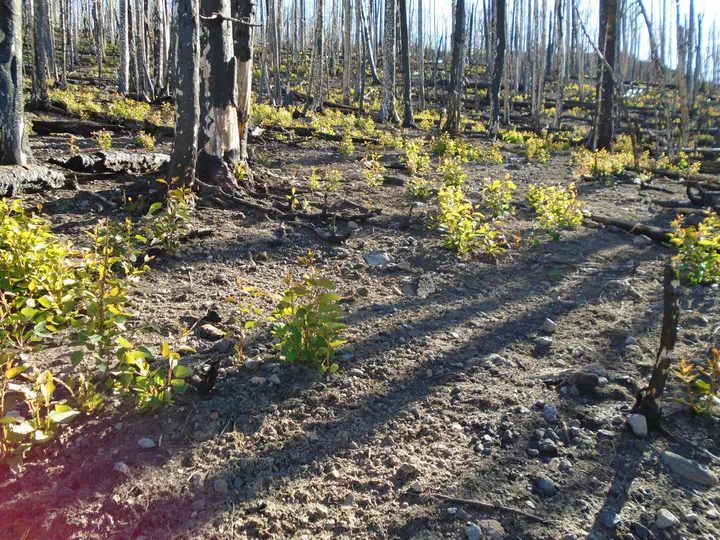Post-fire conifer and aspen regeneration
 Photo by Larissa Yocom
Photo by Larissa YocomGiven that fires, including large and severe fires, will certainly continue to burn, an understanding of post-fire vegetation response and regeneration is essential to understanding how fire severity, landscape attributes, pre-fire vegetation, and climate in the years following a fire interact to influence successional pathways and long-term patterns in forests. Post-fire forest dynamics have implications for timber, wildlife, grazing, watershed health and snowpack, and post-fire patterns influence the likelihood of subsequent disturbances such as reburns or pests and pathogens.
In 2018, I started a project in the 2017 Brian Head fire in southwestern Utah to investigate post-fire resilience over multiple years and across multiple gradients, including elevation, pre-fire drought stress, and high-severity patch size. This area is an ideal location because the fire burned across a heterogeneous landscape of forest types, elevation, and topographic complexity. Former graduate student Mark Kreider led three papers based on this work, a) showing how to differentiate aspen seedlings from suckers, b) demonstrating that aspen seedlings are tightly linked to burned soil, negatively influenced by aspen sucker competition, and may represent an important pathway for maintaining forest resilience, particularly in high-severity burned areas, and c) quantifying aspen seedling abundance in fire footprints throughout the Intermountain West.
We are currently focusing on conifer regeneration dynamics in “reburns” which are areas that burn in two or more wildfires within a short time frame. This project is led by Nadav Mouallem.